Advocates say state’s Health Incentives Program ‘more important than ever’
| Published: 03-11-2025 5:26 PM |
NORTHAMPTON — The bags for many customers checking out at Northampton’s Winter Market on Saturday were lighter than they used to be — something increasingly common since December.
Meanwhile, the farmers’ pockets have been less padded over this period, with steep revenue drops as high as 40-50%.
The change? Cuts to state’s Healthy Incentives Program brought about by a $10 million deficit for the state’s Healthy Incentives Program (HIP) that since December has slashed the amount of funding available for low-income households to purchase local produce.
HIP is a program that puts money back on EBT cards when people use their Supplemental Nutrition Assistance Program (SNAP) benefits to buy healthy, local produce from HIP vendors. Both HIP and SNAP are administered by the Department of Transitional Assistance (DTA).
Original funding levels saw households of one to two people receiving up to $40, households of three to five getting up to $60 and houses of six or more people getting up to $80 per month.
But since December, $20 is the standard amount for every recipient, regardless of household size.
In an effort to bring the program back to its full vitality, farmers and other advocates are preparing to head to the State House on Thursday for March 13’s Healthy Incentives Program (HIP) Advocacy Day, where they will broadcast the impacts of this formerly “thriving” program.
That drop in funds has made a huge difference for farmers like Rachel Robertson-Goldberg, who owns Crabapple Farm in Chesterfield with her husband Tevis. For many farmers, HIP represents a quarter or even half of their revenue. The couple fears that the cuts, should they continue, will lead to a financial crisis for farmers and a breakdown of healthy habits for low-income families who rely on the financial lift.
Article continues after...
Yesterday's Most Read Articles
 FBI conducts court-authorized investigation at Hockanum Road home in Hadley
FBI conducts court-authorized investigation at Hockanum Road home in Hadley
 Area property deed transfers, April 11
Area property deed transfers, April 11
 Amherst Town Council calls emergency meeting to consider rescinding funds for Jones Library project
Amherst Town Council calls emergency meeting to consider rescinding funds for Jones Library project
 Hadley man arrested on firearms, ammunition charges after FBI searches home
Hadley man arrested on firearms, ammunition charges after FBI searches home
 Amherst launches red card campaign for immigrant rights
Amherst launches red card campaign for immigrant rights
 Northampton Police search for suspect in water pellet shooting
Northampton Police search for suspect in water pellet shooting
“The impact of the program is much broader than just the folks who receive SNAP benefits,” said Robertson-Goldberg during an interview at the Northampton Farmers Market last Saturday. “What it has meant for us over the years is that we have a core group of folks that can only spend those funds on our produce.”
This security, she said, is withering.
Ryan Voiland, who owns Red Fire Farm in Granby with his wife, Sarah, said that revenue has dropped by as much as 40% since December, especially in Northampton and Springfield.
In a letter to Gov. Maura Healey, Voiland pleaded for the state to provide more money for HIP. He said this drastic drop in profit will make it no longer “viable” to serve to underprivileged communities and may force himself and other farmers to sell in “affluent” communities outside Boston just to be able to stay afloat financially.
“While the winter is important, relative to the amount of sales, this level of drop during the summer may be disastrous to local farmers,” he said.
Other farmers said the lack of clarity around HIP funding has made planning near impossible.
“The other thing is the way the state has handled cutting HIP and the way they’re maybe bringing it back sometime,” said Tevis Robertson-Goldberg.
“We can’t just turn off the vegetables that we grew last summer, just because we don’t have customers anymore,” he said.
Many interviewed at the Northampton Winter Market fear continued cuts to the HIP program will ruin people’s habits because the program fosters consistency — both for farmers who can have a steady stream of income, and for customers because it allows them to affordably seek healthy food choices.
Andrew Oks, a farmer in addition to a HIP user, said the program has been “massively helpful” to him.
“I mean, it’s a big part of why I’m able to come to the farmer’s market,” he said. “I think the community is going to have to figure out some other way to get farmers to get food sold, and a way for customers to get high quality food.”
Greg Maxwell, a HIP user, said he’s not as concerned for himself as much as those with larger households, and about those families that, “you learn to rely on that to a certain extent, right?”
And HIP user Chaya Grossberg said that over the past months she’s has been purchasing less produce due to the cuts. “I know its impacting the farmers,” she said.
The cuts were the result of a $10 million budget deficit, as DTA’s line item for HIP was set at $15 million, instead of Healey’s requested $25 million.
The cuts are reflected in DTA’s monthly stats. In December 2023, there were 53,125 transactions, an average incentive of $40.06 and a total of $1.23 million in HIP incentives earned, according to data DTA publishes every month.
In December 2024, there were 37,090 HIP transactions with an average incentive of $19.34. In total, $542,260 in HIP incentives were earned. The total number of HIP households also dropped from 43,039 to 28,037.
State finance laws require DTA to operate within its appropriated budget and the agency opted to reduce the benefits in order to maintain a year-round program. To restore the funding back to its previous levels, the $10 million shortfall would need to be filled by a supplemental budget, which needs to be filed by Healey.
A supplemental budget may be on the way, according to state Sen. Jo Comerford, D-Northampton.
“I hear the administration is readying one,” Comerford said recently. “We check in all the time.”
However, some local voices aren’t as confident.
Claire Morenon, the communications manager for Communities Involved in Sustaining Agriculture, said last week that, “I’ve lost all hope for a supplemental budget.” She wants to see Healey allocate more for the program than the $18 million request next fiscal year.
During a recent visit to Conway, Healey said she highly values HIP and pointed to that fiscal year 2026 budget request, while also noting that discussions with legislators are ongoing.
“I proposed an 18% increase. It’s a really important program, too many families across Massachusetts, and particularly in this region, are dealing with food insecurity and that’s why I’ve always put a high value on supporting the program,” Healey said. “We’ll continue to stay in dialogue with the Legislature about this.”
While Comerford can’t speak for the House, she said the Senate is likely to eye a funding level of $22.5 million for the upcoming fiscal year.
“I hope the Senate goes higher,” she said. “We went higher last time.”
HIP Advocacy Day is an annual event held each year at the State House and organized by the Massachusetts Food System Collaborative. The event sees advocates from around the state travel to Boston to brief legislators on the importance of HIP and how it provides access to healthy, locally grown food. It also serves as an opportunity to ask the Legislature to fund the program and this year’s ask will be $25 million, according to the Collaborative Policy Director Rebecca Miller.
While HIP Advocacy Day is held every year, Miller said this year’s event is taking on a new level of importance, especially as the federal government considers sweeping funding cuts in the coming weeks. The House budget likely to come before lawmakers is proposing cutting $230 billion from the House Agriculture Committee, which oversees SNAP.
“It’s more important than ever to see full funding for HIP,” Miller said. “We want to see full funding, so we can reverse those cuts … With the threat to federal cuts to SNAP, HIP is more important than ever.”
If SNAP sees significant cuts, folks in the Pioneer Valley will feel the effects, said Christina Maxwell, the director of programs at the Food Bank of Western Massachusetts. There are approximately 113,000 households in western Massachusetts that rely on SNAP benefits, which bring in about $35 million to the region each month. Those dollars go to grocers, farmers and other businesses, according to the Food Bank.
Comerford, too, said the possibility of funding cuts is alarming and it should kick Massachusetts into gear.
“The chaos at the federal level gives an imperative to be as steady and stable as possible, especially in regard to basic human needs like food,” she said. “The legislators in western Mass., we feel this urgency, we feel the pressure that mounts every day … The state needs to signal that we understand that need to do every single thing we can.”
Samuel Gelinas can be reached at sgelinas@gazettenet.com. Chris Larabee can be reached at clarabee@recorder.com.

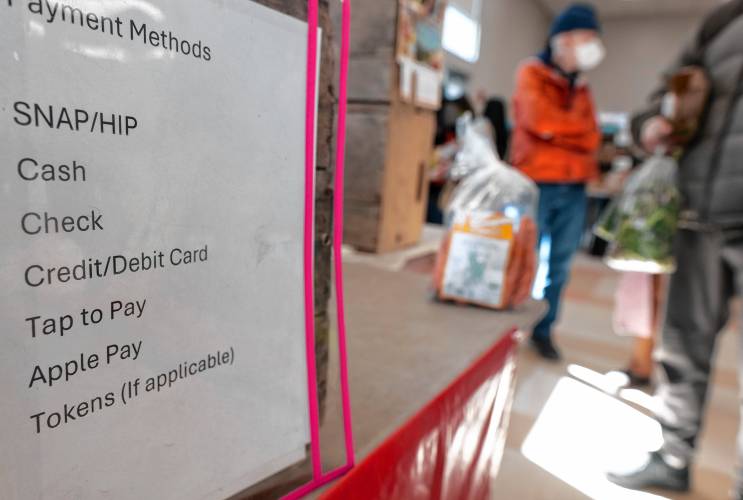
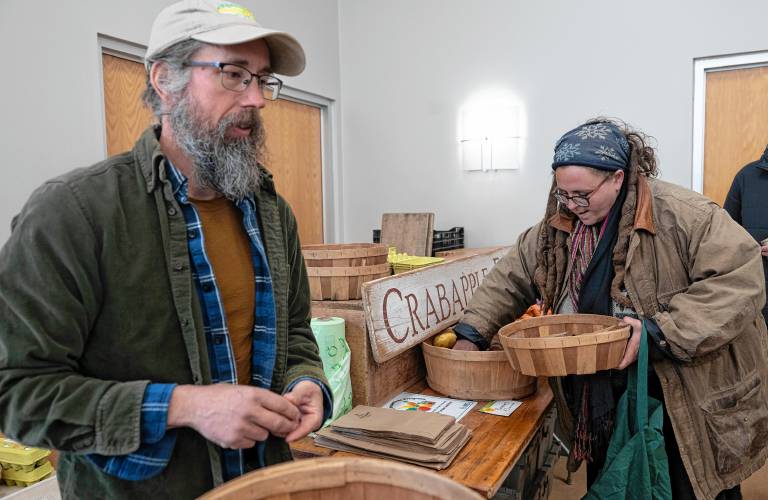
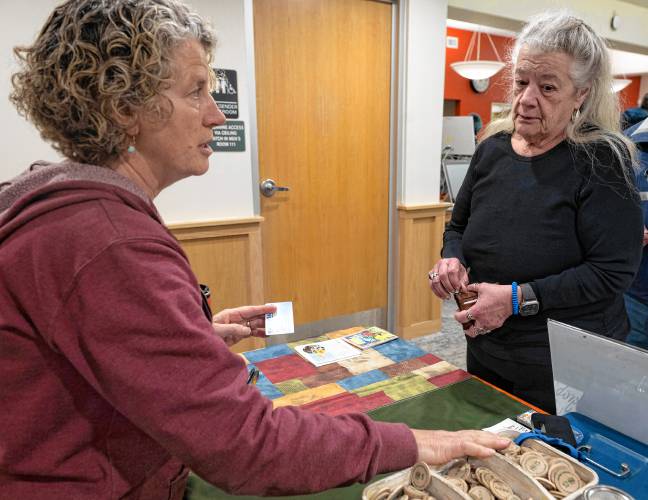
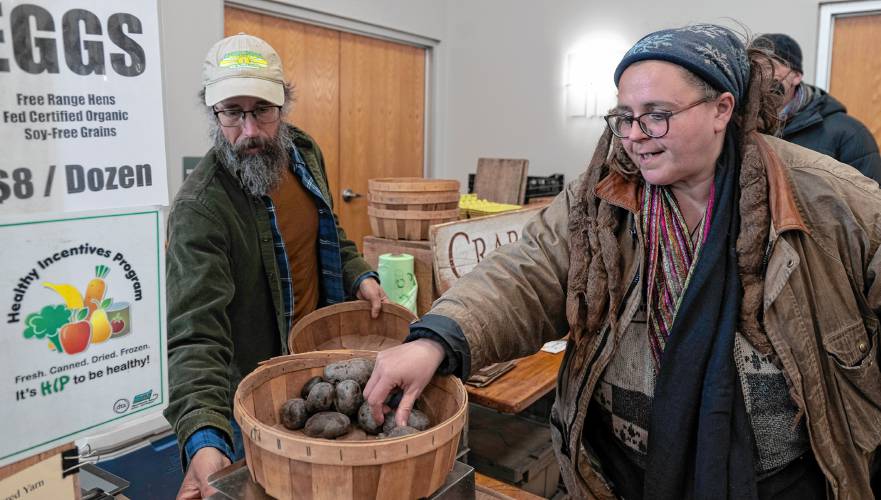





 Northampton School Committee backs ‘strong’ budget, while acknowledging they likely won’t get it
Northampton School Committee backs ‘strong’ budget, while acknowledging they likely won’t get it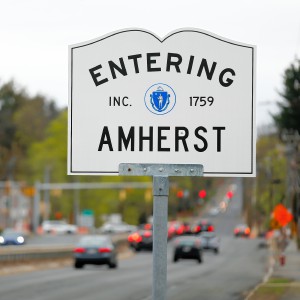 Amherst Town Council approves University Drive overlay district
Amherst Town Council approves University Drive overlay district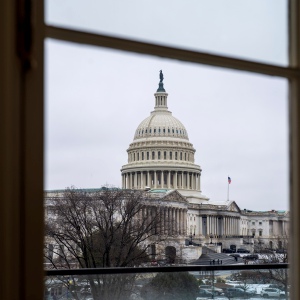 Local Dems push state’s congressional delegation for action
Local Dems push state’s congressional delegation for action
